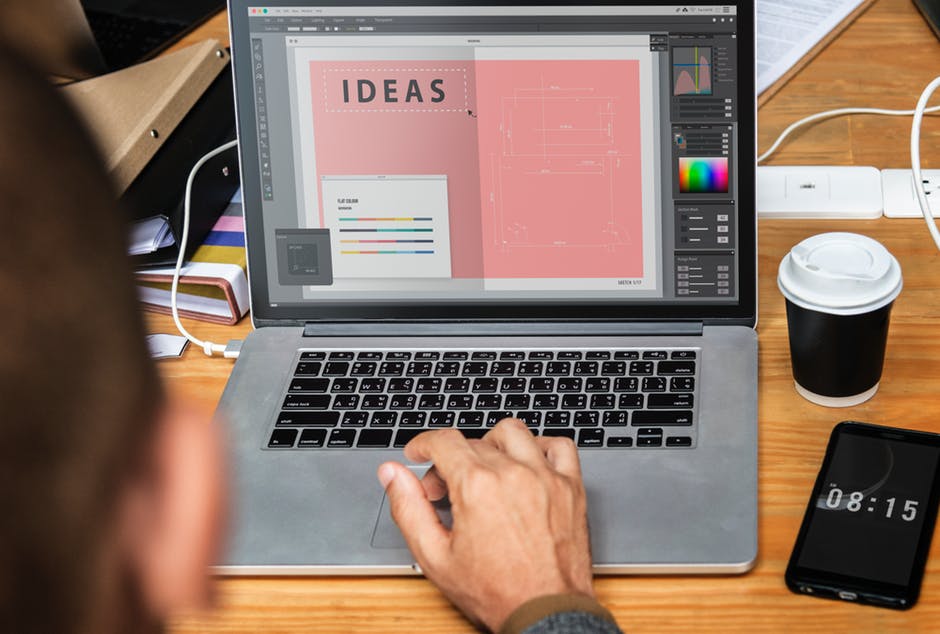Trade shows share a lot in common with whale hunting of the late 17th century. You load up your ship with all your best equipment and personnel, set sail, and hope to come back with profit.
The key difference between then and now is they used harpoons and you use big graphic layouts to hook your whales. Your booth layout helps you navigate troubled waters and your booth graphics pull in your prey… er consumers.
It’s a challenge to stand out among the 600K new businesses each year. That’s why you need the best tools you can find to hook the most customers.
The following tips show you how to guide your aim and sharpen your prongs to give your graphics penetrating power and lasting hooks.
Big Graphic Hook Essentials
Thinking big doesn’t always come easy. With the constant need to make an impact in a diverse and competitive world, nuance clashes with flair.
You want to showcase your business and attract customers, but you also want to come across professional. You want to wow potential customers and clients with you offerings but need to stick in their heads for later.
With all these seemingly competing drives, making a graphics decision becomes difficult.
One place to start is looking through a strong portfolio of exhibits and booths to see what you like and what you don’t. Not only does this spark ideas for what you want, but it also gives you a touchstone for explaining your vision to a designer.
1. Floor to Ceiling
First off, your trade show booth design isn’t a pamphlet or a flat advertisement. It is a full-fledged 3D object. You have way more than a single surface area.
Consider your ceiling space and your floor space. You don’t want to put the same design in both locations or the locations between. You are thinking of a comprehensive object made of several pieces.
Each piece should do its own share of the work and contribute to the whole. Keep your overall vision in mind and then break it down piece by piece.
If your overall plan is strong, you can make the component decisions with confidence.
2. Viewing Distance
In creating a design you need to consider three major viewing distances. Consider how you will be seen at long distance, on approach, and up close.
Turning back to our exciting whaling analogy you can see how this plays out. You want potential customers to be able to spot your booth from across the sometimes vast hangars of the trade floor.
As they get closer or are involved with booths in your block, you want to draw them closer to you. This often involves reasons not to leave over reasons to come closer.
Finally, you want them to be able to gain information and find being at your booth rewarding and pleasant.
Many booths overlook one or more of these distances. By mastering all three, you give yourself a competitive edge.
3. Narrative Flow
While the floor to ceiling concept confronts your long and up close distances, your walls provide the most approach appeal.
You want to create a narrative and visual flow to your booth design. This serves to get the customer asking ‘what’s this about?’ and then answering that question as they work their way around.
Using jarring and disjointed components for your booth drives away interest. If a customer can’t tell what you are offering from the approach distance, they won’t get close enough to hear your explanations.
4. Strike a Balance
Your font and color choices contribute to the approach distance troubles. Too often the pull is to stand out, to be vibrant and make a certain shock and awe.
Your color and font choices should be inviting, coherent, and representative of your approach to business. Ease off on the impact and rely on the scientifically proven fact that memories form regardless of awareness.
If you give the viewer something to think about, they will come back with questions that need answers. If you hit them hard up front, they may only remember the impact and not form a favorable connection to you.
5. Spark Interest
Finally, your approach distance needs to pull in the customer. Yes, we just covered several tips on how not to drive them off because that’s important. Well, so is this.
You spark interest in your offerings by putting your business first. You already know famous brands that have rooted themselves in the collective consciousness. Them and their simple and catchy logos and taglines.
You want to get in on that by creating something that does more than strike and leave an impression. You want your trade show booth graphics to create a bit of a mystery.
This tip serves a dual purpose. First, you focus on creating an air of mystery, something that demands an answer. Second, you cultivate an in-the-know clique that will spread that information to others.
6. Trust Your Outsourcing
When it comes to trade show printing, you don’t want to overthink it. There is a reason you started your company and that likely wasn’t to design booths and print graphics.
You outsource for that.
In choosing a professional for that purpose, listen to their advice. They know their business.
Focus on creating a clear message and let them help you with the delivery.
7. Spotlight You
In the end, you put together a booth and graphics to cover that booth to sell you. Don’t leave your personal flair and style out of that equation.
The best booth in the world may get a lot of customers to check you out, but they need to be prepared to see your offerings.
The fastest way to lose a customer is to sell them one thing in the visuals and then give something else entirely.
Keep your business and it’s goals in mind throughout the design process and you won’t lead yourself, or your customers, astray.
Set Sail
Now you have everything you need to land the best clientele. With your company mission statement to guide you and your big graphic weaponry at the ready, you need only go to where the people are.
For other questions about booths and trade show services, we provide several offerings. If you need help making your boat ship-shape we are there start to finish.
- Crafting the Perfect Exhibition Plan: Tips, Tricks, and Trends - November 9, 2023
- 7 Tips for Setting Up Tabletop Trade Show Displays - October 12, 2023
- An Example Product Presentation: Use This to Model Your Exhibit - September 25, 2023



